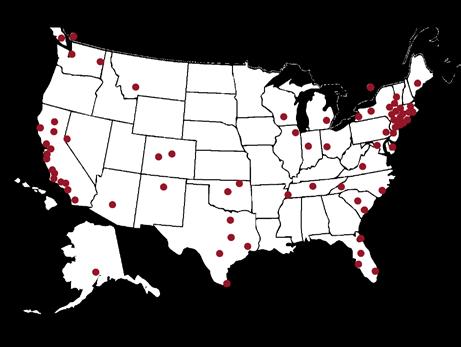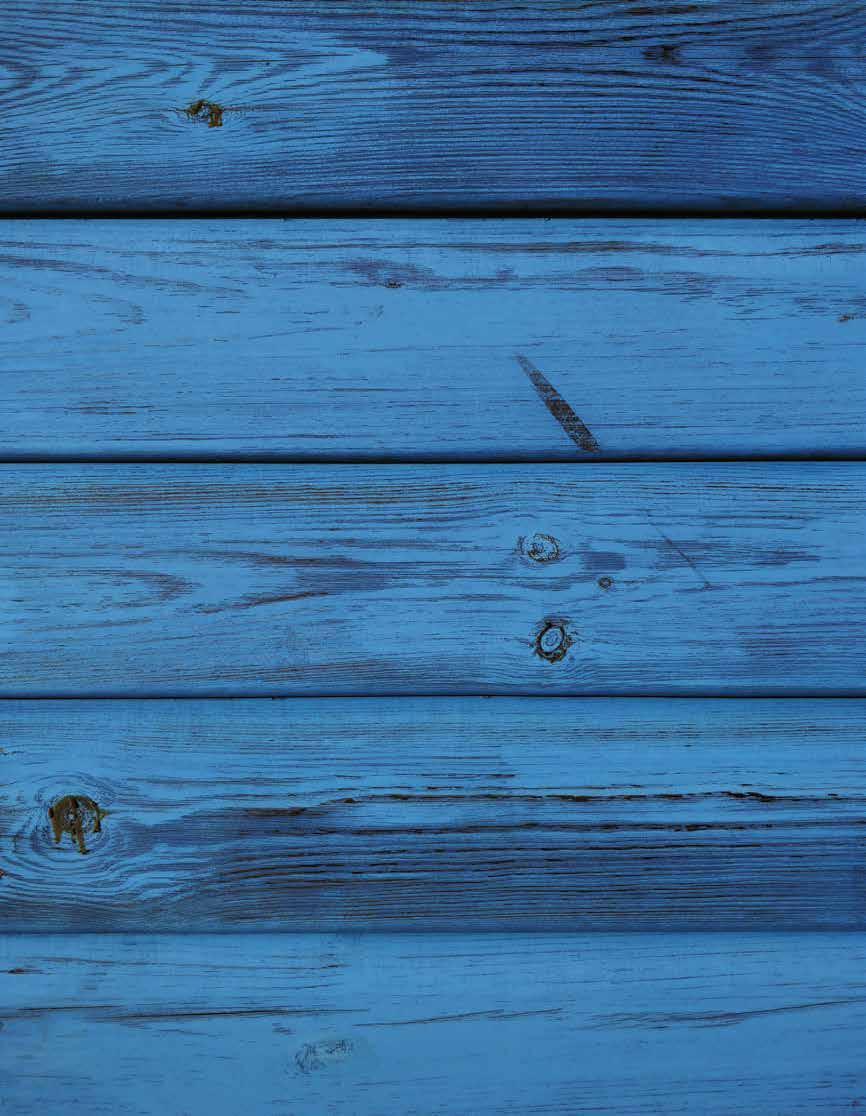




Nothing sets the summer scene like a watermelon on a plaid picnic blanket. It's the ultimate thirst-quenching snack, synonymous with the Fourth of July, but while red watermelon has dominated recent decades, its yellow-fleshed ancestor was the hydration hero of summers past
Yellow watermelon was cultivated long before the rise of red varieties, with the first record of harvest depicted in Egyptian hieroglyphics over 5,000 years ago. Dubbed the "desert king," yellow watermelon was a treasured water source that could grow in the arid African climate and be stored for weeks in its hard shell With more than ninety-percent water content, yellow watermelons were carried like natural canteens by merchants traversing long trade routes or sailors voyaging at sea They were even placed in ancient Egyptian tombs including that of the famous King Tut to nourish the dead on their journey to the afterlife
Joining yellow watermelons in the afterlife was mint. Melon and mint, the immortal coupling of summer, originally met in the mausoleum, as mint served as an aromatic in Egyptian burial rites to mask unpleasant odors. Mint's sweet smell was certainly legendary and, in some cases, eternal, as told in Greek mythology. A river nymph named Minthe once caught the wandering eye of Hades, god of the underworld, and was transformed into the plant by Hades' jealous wife. Unable to reverse the curse, Hades bestowed Minthe with a sweet aroma so that she would continue to captivate anyone in her presence.
From the tombs to your table, mint and watermelon have given life to the perfect flavor pairing to charm your taste buds and keep you cool and refreshed Yellow watermelon's subtly sweet taste compliments the soothing flavor of mint, a combination ideal for fruit salads to sorbet and smoothies to gazpacho, so you can beat the heat this summer in timeless style

Craving more? Download the Specialty Produce App to explore more juicy stories of fruits and vegetables or stop by the Specialty Produce Warehouse to try your own yellow watermelon and mint creation- we promise it's to die for!


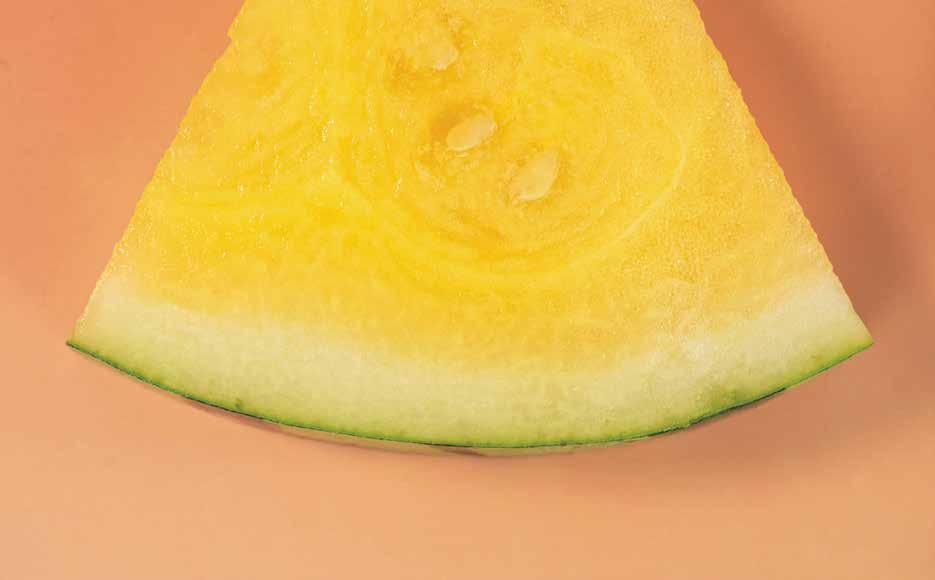
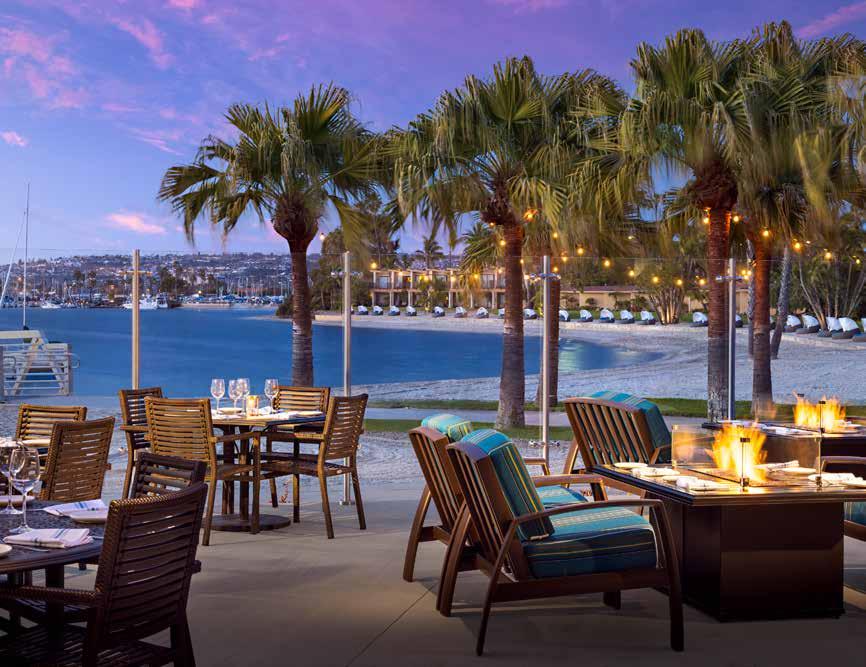
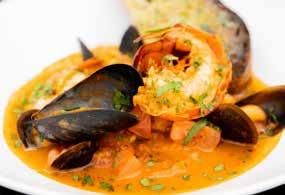

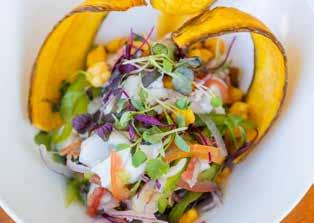

Plan B Sustainable Fisheries departs Point Loma for a four-day commercial fishing trip to stock the fish case at TunaVille Market and Grocery. Story on page 46.
THIS IMAGE
Chef Juan González salts a pan-fried Pacific mackerel filet. Find the recipe on page 11.
 PHOTO BY LAUREN DI MATTEO
PHOTO BY LAUREN DI MATTEO
WHAT TO LOOK FOR ON EDIBLESANDIEGO.COM
• Aqua Farming in San Diego
• Provisions for the Pacific Coast Trail
• Recipe for Opah Yukhoe + MORE
LISTEN
• Living Local Podcast
• Edible Communities Radio podcast available on ediblecommunities.com
WATCH @ediblesandiego ON YOUTUBE

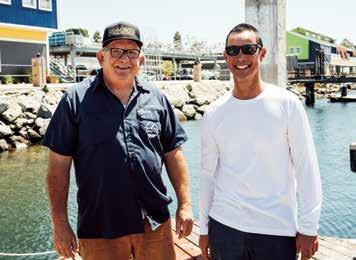
• Melon Noodle Salad
• Potato Salad with Gooseberry Vinaigrette
• Sweet Pepper and Corn Salad
• Kimchi-Spiced Cucumbers
• Coconut Pudding with Passion Fruit
EDIBLE SAN DIEGO EXPRESS
Like our magazine and want more? Have seasonally curated stories and recipes from Edible San Diego sent straight to your inbox up to four times per month with a digital annual membership for only $9.
Added perks include discounts from local business partners and VIP invites to issue launch parties.
Scan the QR code to become a member.

“Around us, life bursts with miracles, a glass of water, a ray of sunshine, a leaf, a caterpillar, a flower, laughter, raindrops.”
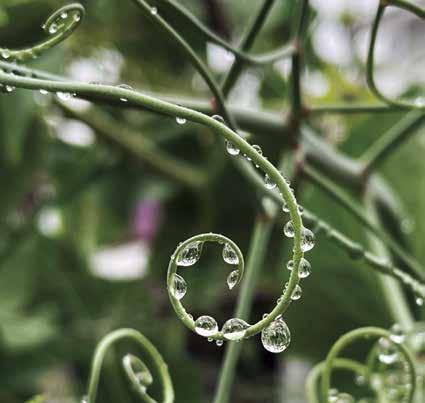 — Thich Nhat Hanh
— Thich Nhat Hanh
Water is life, so welcome to Waterworld, our 70th issue. Partnering with San Diego Coastkeeper has helped us create an issue that in the heat of summer deepens our collective understanding of water and all it means to us. This edition also marks our 15th anniversary! Did you know that Mary and Jeff Willis founded this company before Instagram existed? The second set of owners, Riley Davenport and John Vawter, handed it off to me seven years ago. I’m proud to carry on their vision and to make regenerative living our editorial guide star.
Fortunately, as a tiny company we’re not alone, and neither are you in your health journey. We’re one of 75 other Edible magazines across North America—a network that enables you to travel like a local and take part in an international movement celebrating local food.
These themes of time and water have been on my mind as we assembled this issue over many months. The incredible rains we had this spring taught many Californians what a watershed is, and wildflower super blooms motivated thousands of people to get outdoors and explore nature’s wonder. I love this photo because it captures the quiet between storms and how so much in life spirals around and around until we grow enough to figure things out.
Speaking of which, this milestone affirms that our focus on local food is more important than ever before. Why? Because local food reminds us how interconnected we are at all scales—from the lining of our gut to microplastics in Arctic sea ice. Every
bite of local food tells a story about people and nature you can get to know personally. Produce, meat, beverages, and prepared foods that come from nearby are going to be fresher with safer, recognizable ingredients and much smaller carbon footprints than mass-produced food. The valuable dollars you spend with local food purveyors go straight to the source. We’re all global citizens, so this isn’t about any absolutes. However, we do celebrate and explore simple seasonal cooking because it’s joyful and good for the planet.
Thank you for being here. Small farmers, local fishers, vintners, eateries, and innovators in our region need you. We all need each other. Let’s keep learning and sharing wellness with ever more neighbors.
Here’s to the next 15 years,
 Katie Stokes Publisher and Editor in Chief, Edible San Diego
Katie Stokes Publisher and Editor in Chief, Edible San Diego

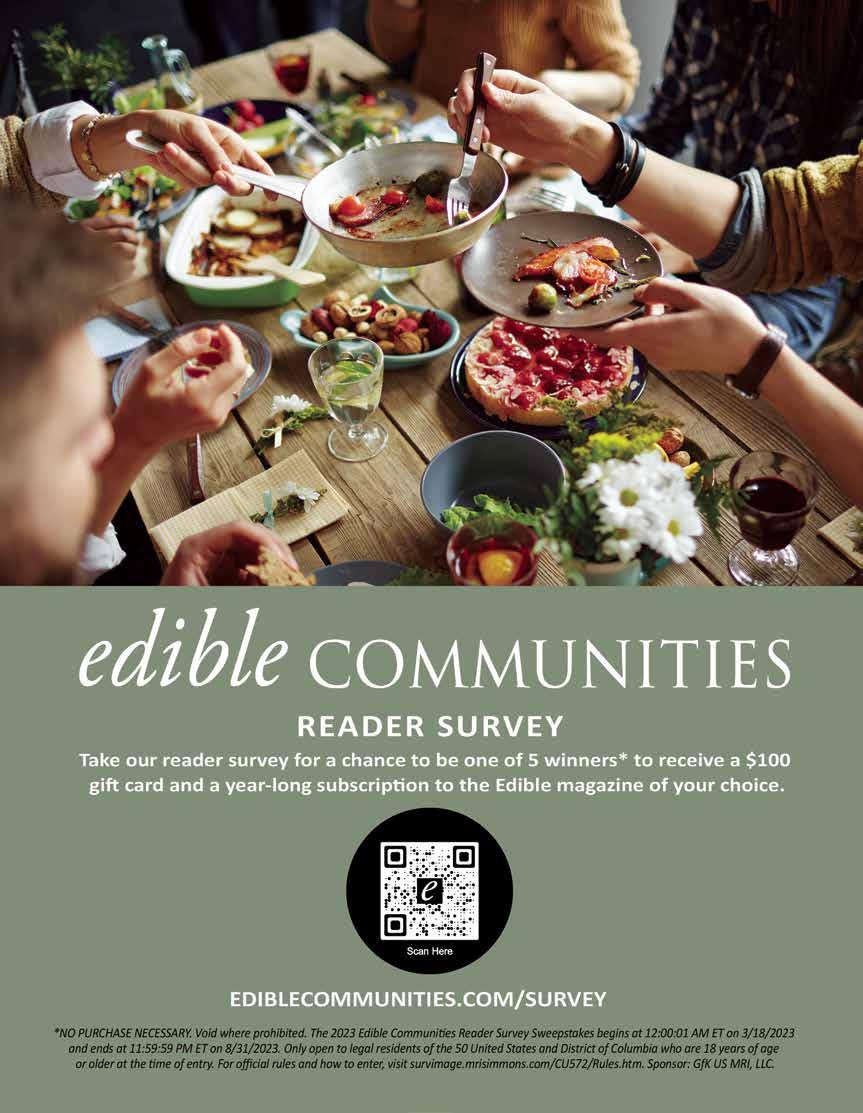
Media
EDITORIAL
Katie Stokes
Editor in Chief
Maria Hesse
Executive EditorDawn Mobley
Copy EditorDESIGN

Lauren di Matteo
Creative Director
Maria Hesse Designer
PUBLISHER
Katie Stokes
ADVERTISING
Toni Kraft
Julie Pendray
Katie Stokes
COVER PHOTO BY LAUREN DI MATTEO
For information about advertising options, rates, and deadlines please contact katie@ediblesandiego.com.

No part of this publication may be used without written permission from the publisher. © 2023 All rights reserved.
Every effort is made to avoid errors, misspellings, and omissions. If an error comes to your attention, please let us know and accept our sincere apologies.
This magazine is made possible thanks to Edible San Diego advertisers, members, and subscribers. Thank you for supporting San Diego’s local and independently women-owned food media company.
CONTACT
Edible San Diego
1501 San Elijo Rd. South #104-210 San Marcos, CA 92078 601-526-1919
info@ediblesandiego.com
Social
Barefoot Books is an award-winning, independent, women-owned and run children’s book publisher based in Concord, MA. Founded by two mothers in England in 1992, they are committed to creating visually captivating books that celebrate global awareness and diversity, spark curiosity, and capture imaginations.
Marie Diaz is the marine programs manager for San Diego Coastkeeper. When she’s not hosting beach cleanups or restoring riverbeds, you can find her surfing, baking, or working in the Smith Coral Reef Ecology Lab at Scripps Institution of Oceanography with imaging software to better understand coral reef communities and the ecological changes and challenges they face.
Lauren di Matteo is a photographer based in North County San Diego, who captures the magnificent and mundane to express the worth of every moment. Whether planning an itinerary around the best places to eat in Europe or finding little-known treasures up the coast of California, her aim is to photograph life’s intricacies and convey that to others. Her natural intuitiveness and unique ability to connect with subjects impart an uncommon depth and complexity to her images.
Michael Gardiner is the author of Modern Kosher: Global Flavors, New Traditions (Rizzoli, 2020) and Cali-Baja Cuisine: Ensenada Aguachiles, Tijuana Taco Stands and San Diego Cali Burritos (Rizzoli, September 2023). He is a regular food feature writer for Edible San Diego and The San Diego Union-Tribune, contributing editor for The Cook’s Cook, and freelanced for Tasting Table,Thrillist, and other publications. Gardiner was the long-time weekly restaurant reviewer for San Diego CityBeat before its closure in 2020. Gardiner has won San Diego Press Club awards every year since 2018.
Tommy Gomes is one of San Diego’s most beloved food personalities and an outspoken champion of local seafood, responsible fishing practices, and using every part of the fish. Catch episodes of The Fishmonger, now in its third season on Outdoor Channel, or stop by TunaVille Market and Grocery in Point Loma.
He is the founder and executive editor for San Diego Beer News, an on-air correspondent for FOX 5 San Diego, beer-industry contributor for The San Diego Union-Tribune, and food & beverage editor for luxury publication Ranch & Coast Magazine. Follow him on Instagram, Twitter, and Facebook.
Maria Hesse is an award-winning writer and the executive editor of Edible San Diego. You can find her catching the sunset at Mission Beach or on Instagram @mariafromediblesd.
Paul Hormick is a horticulturist and environmentalist with a master’s degree in environmental science and policy. As a freelance writer, his interests are in the environment, current events, music, and the arts. He is the author of As We Believe: Conversations of Religion and Faith. Paul lives in San Diego with his wife, Bryna.
Mim Michelove loves growing food! She is cofounder, CEO, and president of local nonprofit Healthy Day Partners through which she created the first certified-organic schooldistrict farm in America supplying its own school lunch program with fresh produce. She is dedicated to ending local hunger by empowering people to grow their own food, and empowering home gardeners to grow extra produce to nourish neighbors in need.
Mike Reeske grows Rio Del Rey organic heirloom dry beans. For more information about heirloom beans and recipes, visit riodelreyfarms.com.
Luke Schmuecker is a creative director, photographer, and the founder of Farnam West Creative, a brand strategy and creative collective based in San Diego. He has worked on projects for everyone from Food & Wine to the Tennis Channel. In his free time you can find him wandering the aisles of grocery stores, analyzing branding, seeing what’s new, and trying to predict the future.
Alyssa Celones Senturk is the communications and outreach director for San Diego Coastkeeper. When she’s not working on creative multimedia projects, she’s probably working in her garden, cooking a meal for loved ones, dancing her face off, or adventuring outside with her dog. She also tells stories about everyday activism on her podcast, Feelanthrope.
ediblesandiego.com
2017 Updated
2017 Updated
@ediblesandiego
@ediblesandiego
Juan González is a San Diego-based chef and owner of Mesa Agrícola. He draws inspiration from his roots in Baja California and the fresh, seasonal ingredients from his small family farm in Valley Center as well as local farms, ranches, and fishermen. Mesa Agrícola offers dinner service at Vino Carta in Solana Beach and Little Thief in North Park. You can find their weekly schedule on Instagram @mesaagricola and at mesaagricola.com.
Brandon Hernández is an award-winning San Diego-based beer journalist. He has covered the brewing industry for 16 years, contributing thousands of articles to newspapers, magazines, and online outlets, and spent nearly a decade working for craft breweries.
Michelle Stansbury is an award-winning freelance writer based in San Diego. She covers travel, food, and parenting for Marie Claire, Good Housekeeping, and more. Misuse of the word “literally” drives her figuratively insane. Follow her on Instagram at @discoverwithmichelle.
Lucera Weber (née Sanchez) is the campaigns manager for San Diego Coastkeeper. You can usually find her making art, cooking, caring for her cat and dog, or binge-watching reality television shows.
ediblesandiego.com







Beans are amazingly adaptable, having spread from their origin in northern Mexico to places around the world. Like many other crops, they depend on large amounts of water and moderate summer temperatures to grow. But with a warming world, they face weather extremes of high temperatures, both day and night, and increasing periods of drought across the planet. These conditions reduce bean production dramatically, posing a genuine threat to growers and consumers whose lives have already been upended by a warmer climate. The common bean is the most important protein source and dietary staple in low-income countries from the highlands of Central America to the vast expanses of sub-Saharan Africa.
Beans are threatened when overnight temperatures do not drop
below 68°F (20°C). Daytime highs above 95°F (35°C) also affect plant development. Even using the best management practices—including irrigation and planting beans alongside corn plants to increase shaded, cooler areas for beans—doesn’t always compensate.
Fortunately, scientists are working on a globe-spanning project to make the common bean more resistant to heat. The secret lies in its wild ancestor, the tepary bean, which has been grown for at least 2,500 years in the hot, arid regions of the southwestern United States and northern Mexico. Due to its native habitat in the Sonoran Desert, domesticated tepary beans are considered to be the most drought-tolerant annual legume in the world. They are capable of producing a harvest of beans with a single rain in
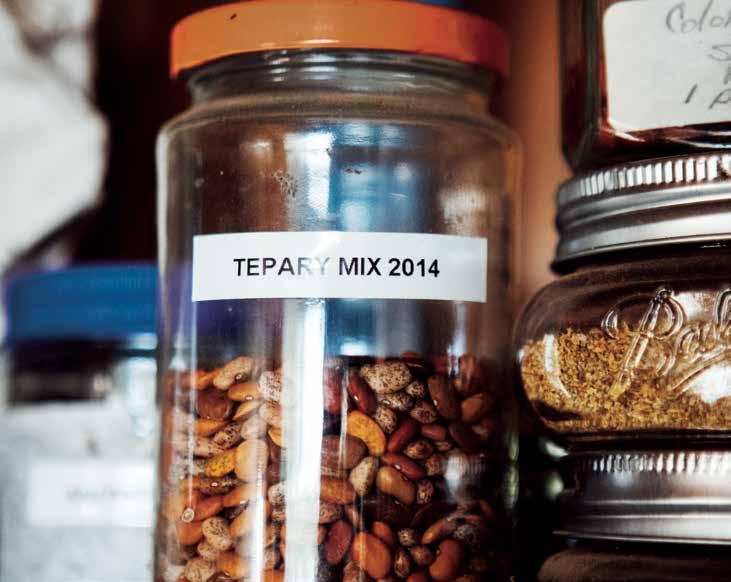
the harshest conditions.
Researchers are working to exploit the genes responsible for climate adaptivity in the tepary bean, known as Phaseolus acutifolius, and breed them into the common bean, or Phaseolus vulgaris, making cultures on petri dishes to enable pollination between two different varieties without using GMO processes. In Nicaragua, black bean harvests were declining almost to the point of total collapse. The newly developed hybrid between tepary beans and black beans saved the day. Farmers in Nicaragua recently started cultivating one of these hybrid bean varieties and found it produced harvests twice as large as other beans that

farmers were previously planting. Similar results were observed in Costa Rica.
We plant five varieties of tepary beans at Rio Del Rey, including one we developed over three years from tepary bean variants. Growing these specific varieties conserves water and produces more beans per acre than other heirloom beans. The future lies in this bean: It is heat- and drought-tolerant, grows on poor soils, and has a protein content near 24%! With continued research, the tepary bean will be a big part of the solution in our adaptation to climate change. D
» riodelreyfarms.comGet
farmland.org

Discrimination against marginalized groups in agriculture negatively affects all Americans by limiting the opportunities for farmers, workers, and consumers.
AFT is raising up diverse voices in agriculture, because we believe diversity contributes to a more resilient agricultural system, a stronger economy, and a more equitable society.
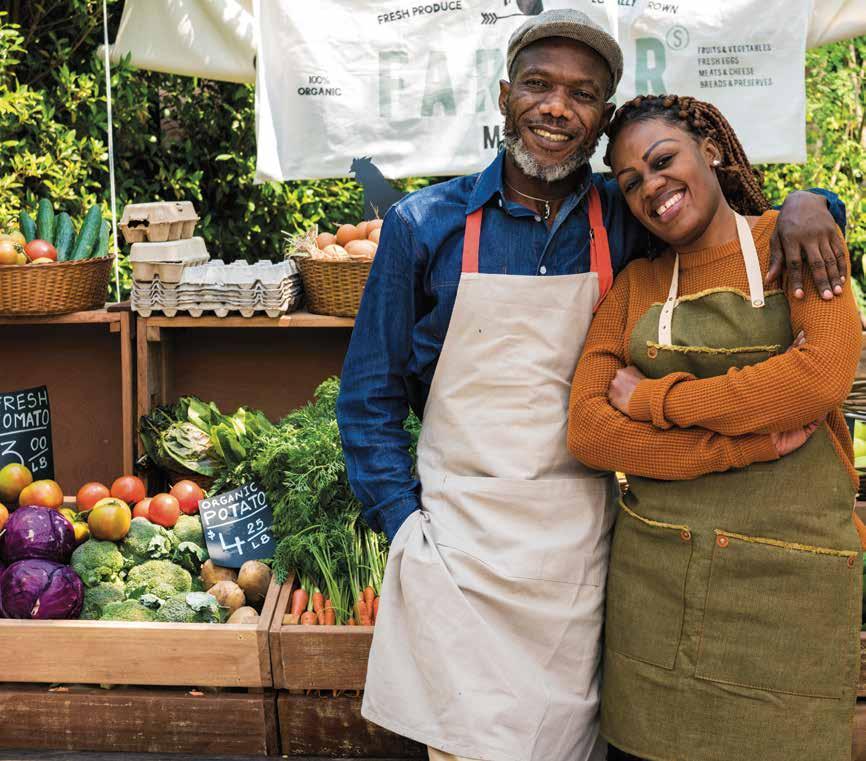
At American Farmland Trust, we believe agriculture is strengthened through diversity.

Pacific mackerel is a sustainable and nutritious seafood choice—it’s also an underutilized common bycatch of commercial fishermen. Serve alongside summery tepary beans and enjoy this flavorful fish that is high in protein and omega-3s.
2 cups dry white tepary beans
2 bay leaves
2 garlic cloves
¼ Spanish onion
1 dried guajillo chile
½ tablespoon salt, or more to taste
2 tablespoons extra-virgin olive oil
1 red bell pepper, diced
4 mackerel fillets, skin on and bones removed
Salt and black pepper to taste
Extra-virgin olive oil or grape-seed oil
8 sprigs pea tendrils or cilantro to garnish
1 lemon, quartered, to serve
Prepare the beans:
Place the beans in a large bowl. Add cool water to bowl to cover beans by 6 inches and let soak overnight at room temperature. Drain beans, discard the liquid, and transfer to a large pot with a lid. Add enough cool water to cover the beans along with the bay leaves, garlic cloves, onion, and guajillo chile by about 4
inches. Bring to a boil over high heat, then lower the heat; cover and simmer gently, stirring occasionally, until the beans are tender, about 1½ to 2 hours. Remove beans from heat, discard bay leaves and guajillo chile, and add salt to taste. Let beans rest for 20 minutes. Reserve 2 cups of the bean cooking liquid, the cooked onion, and garlic cloves, and then drain the beans. In a blender add 1 cup of cooked beans with the onion and garlic, and blend with enough bean liquid to make a smooth bean purée; set aside.
In a large, deep skillet, heat the oil over medium heat. Add bell pepper and sauté for 1 minute. Add cooked beans and 1 cup of the reserved bean liquid. Cook, stirring occasionally, until the liquid has reduced to a glaze, about 10 minutes. Season with salt to taste. Divide the bean purée between four plates and top with bell pepper beans.
Make the Pacific mackerel:
Season the mackerel fillets with salt and pepper.
Heat a glug of olive or grape-seed oil in a nonstick frying pan over high heat.
Once the pan is smoking hot, add the mackerel fillets, skin-side down. Turn the heat down to medium-high. As the fillets curl up away from the heat, use a rubber spatula to gently apply pressure to the fillet so that the fish is flat and all of the skin comes into contact with the pan to ensure even cooking.
Cook for 2 to 4 minutes, depending on the thickness of the fillet. Once the skin is crisp and golden, turn the fillet over and remove the pan from the heat. Leave the mackerel in the pan to cook through in the residual heat, then serve up immediately over beans. Garnish with pea tendrils or cilantro and lemon wedges.
FOSTERING CONSCIOUS GROWTH IN THE SAN DIEGO NATURAL PRODUCTS AND CPG COMMUNITY
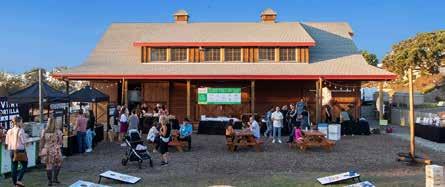
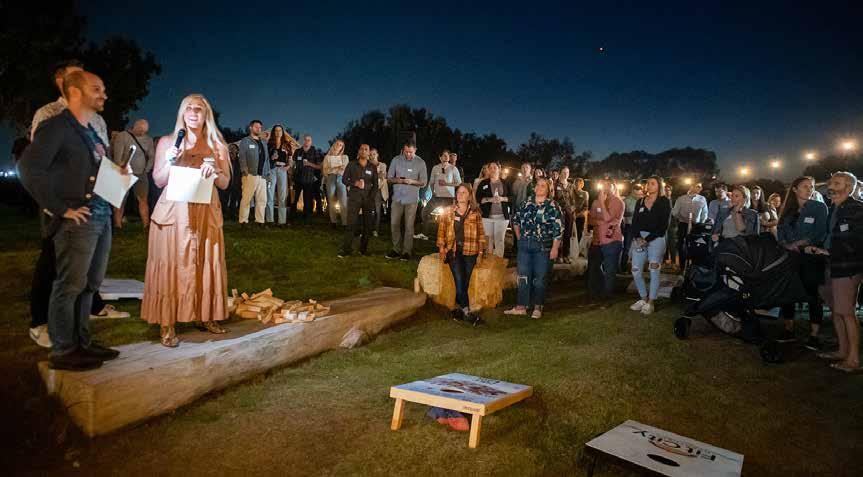
WE VOLUNTEER TOGETHER, HOST EVENTS & EDUCATIONAL FORUMS, AND PROVIDE A SPACE FOR LOCAL COMPANIES TO SHARE THEIR EXPERIENCES AND GROW BETTER TOGETHER.
JOIN US!
 BY MICHELLE STANSBURY
BY MICHELLE STANSBURY
San Diego Surfrider’s Ocean Friendly Restaurants program currently has 77 participating restaurants, making the county one of the nonprofit’s hotspots, according to CJ O’Brien, Surfrider’s Ocean Friendly programs manager.
“There is a lot of excitement and traction in San Diego. Our ocean-friendly restaurants range from food trucks to fine-dining establishments. Surfrider has been tackling the plastic pollution problem for over a decade now. It’s a complex problem with what we view as a simple solution—cutting off plastic use at the source.”
Cesarina Ristorante in Point Loma already fit the mandatory requirements of the program when they applied in 2020, but co-owner Niccolò Angius was inspired to create additional improvements. “One of the optional criteria was water conservation. It’s common practice in restaurants to thaw frozen ingredients under running water, so we changed that. The other was recycling, which we’ve always done, but we’ve improved by educating the staff. They started rinsing out metal cans instead of throwing them in dirty, for example.”
Executive chef Nick Green views sustainability as one of his core roles at Adelaide Restaurant in Del Mar. “As a chef today, if you’re not thinking about these issues you don’t have a right to be cooking.” He joined the Ocean Friendly Restaurants program to help teach and motivate the next generation of chefs and restaurateurs. “I like to educate my team, so having the support of a program like this gives me resources to explain why we do what we do.”
Chef JoJo Ruiz is known for his advocacy of sustainable seafood at his restaurants Serẽa and Lionfish; he faced a new opportunity with his latest concept, Temaki Bar in Encinitas, to create a
lower-waste takeaway program. “We wanted a strong to-go experience, so we have really cool custom rectangular boxes for the maki roll. It’s almost like taking home a little pizza box but for sushi. But it’s not cardboard—it’s a recyclable, thicker paper.” Chef Ruiz looks beyond sourcing sustainable customer-facing packaging and also works with vendors to help reduce waste behind the scenes, like employing reusable crates for fish deliveries.
The Plot in Oceanside is one of Surfrider’s Platinum restaurants, meaning they meet all of the optional criteria in addition to the mandatory requirements. That includes a partnership with reVessel where customers can purchase and bring in reusable containers for to-go orders. Jessica Waite, cofounder of The Plot, is excited to see the reusable container program expand as they open new locations in Carlsbad and Costa Mesa: “A swap program is a little tricky in terms of getting the systems into place. It might cost a little bit to implement, but it offers long-term value for the business.”
Johan Engman is the founder and CEO of Rise and Shine Hospitality Group, San Diego’s largest hospitality group to join the program. One of the criteria they are especially passionate about is composting. “We’ve been doing it for five years or so; it has cost us a lot of money, but we felt like it was the right thing to do and it cut down what we put in the landfill by about 40%,” Engman shares.
Engman encourages individuals to reflect on how they can help lower waste: “Declining takeout utensils is an easy step people can take to help reduce. It’s easy for people to think, I’m just one person, what difference can I make? But small habits make a big difference.” D



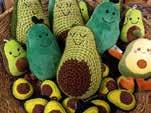


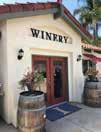





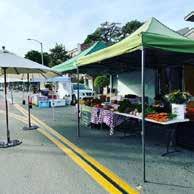
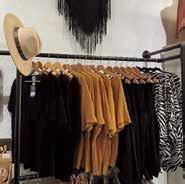

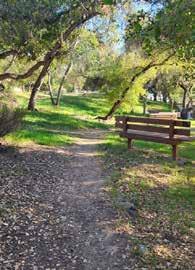

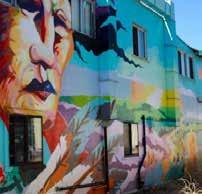


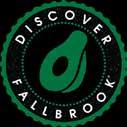
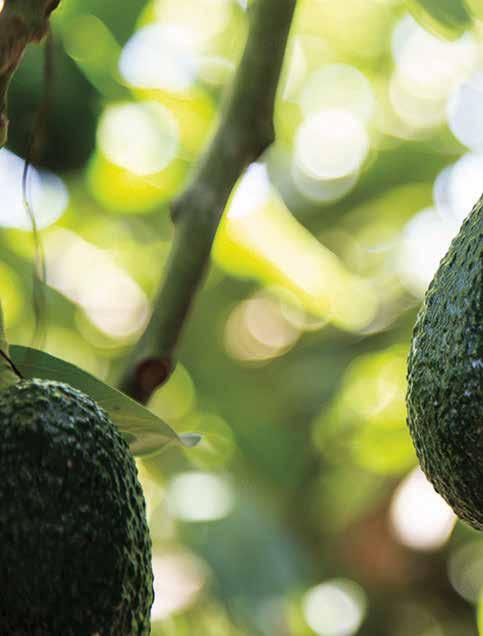
Cut-to-order local and premium seafood makes this shop a seafood lover’s dream destination.
» catalinaop.com
Armed with its own fleet of fishing vessels, Hawaiian Fresh Seafood works closely with government agencies to maintain sustainable practices at sea. Plus, they make delectable poke bowls that are well worth waiting in line for.
» hawaiianfreshseafoods.com
If you’re looking for hook-and-line caught fish, Nico’s buys fish whole from local fishermen and breaks them down for hungry buyers. Follow @nicosfishmarket on Instagram to catch them at a pop-up with partnering businesses like GOODONYA Organic Eatery or sign up for the Fish List to receive email announcements of fish availability.
» nicosfishmarket.com
It’s elusive at most major food retailers, but fresh catch from San Diego’s local fishing fleets is available if you know where to shop.
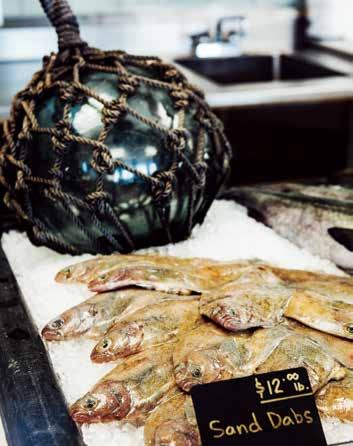
• Quality—because freshness means better taste
• The supply chain is shorter and so is the carbon footprint
• Targeting sustainable species prevents overfishing
• Traceability and transparency
• Supports the local economy
Bluewashing—similar to greenwashing but in this case overmarketing businesses’ social responsibilities or commitments to ocean pollution
Blue Foods—a movement that encourages eating more seafood to address global challenges surrounding health and the environment
» bluefoods.earth
The Saraspe family has been fishing off the San Diego coast for three generations. Spot prawns are their specialty as is selling directly to consumers. Sign up for their email list to be notified when fresh seafood is available and make it a priority to test all the recipes on their website.
» saraspeseafoods.com
This popular open-air market still attracts a crowd every Saturday morning and it’s the ideal way to kick off any weekend. Pro Dockside shoppers show up bright and early, rolling coolers filled with ice for a seafood haul. Make sure to leave room in your plans for piping hot Dockside fish ‘n’ chips to munch on for breakfast.
» thdocksidemarket.com
This little seafood shop has been making waves in Point Loma since it opened in the summer of 2022. A list of daily fresh catch tells you what fishing vessel the fish was caught on—and the tinned fish selection is curated by Tommy Gomes, the Fishmonger himself. (Read more on page 46.) D
» tunavillemarketandgrocery.com


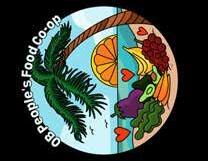



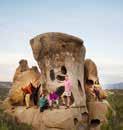
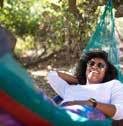











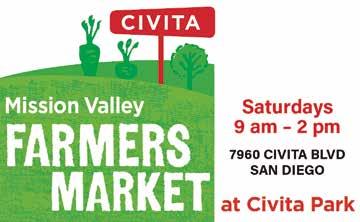






The history of the Rincon Band of Luiseño Indians reflects 14,000 years of life in this region. What is now called the San Luis Rey River connected the Payomkawichum (People of the West) with friends and relatives as they followed its meandering path with the seasons while hunting, fishing, and gathering food between the mountains and the coast for millennia. In recent years, the tribe has built success and sustainability on their 5,000acre Valley Center reservation with a casino, Harrah’s Resort Southern California. The brewery venture takes its name from its place—Rincon Reservation Road—as the tribe continues evolving and extending its cultural reach through craft beer. In 2015, wanting to step outside the box in its efforts to generate revenue and jobs for the tribe, the Rincon Economic Development Corporation (REDCO) noticed San Diego’s flourishing brewing industry and took steps to become a part of it, leading to the construction of the state-of-the-art brewery at Harrah’s Resort Southern California. Opened in December of 2016 as SR76 Beer Works, it was—and remains—the county’s
only tribal-owned-and-operated brewery. The business was built to grow, but despite having a Karl Strauss expat at the helm, a luxe tasting room, and availability throughout the resort, SR76’s beers failed to find the traction REDCO had hoped for.
“We came in naive. Not knowing how to run that type of business, we were very hands-off and allowed consultants to take over,” says REDCO chairman Rik Mazzetti. Roughly two years in, REDCO decided the business needed to be taken in another direction and that it was time for the tribe to go all in. “We became very hands-on and learned what it took to run a brewery from the ground up, from cleaning kegs to filling tanks and equipment maintenance. Along the way, we were introduced to Shawn Steele, a master brewer with over 20 years of experience. He showed us how to do things and helped us establish a direction and operational flow.”
With newfound knowledge and an industry vet in their corner, REDCO relaunched its beer-making operation. But this time, the tribe, its history, culture, symbolism, and identity were at
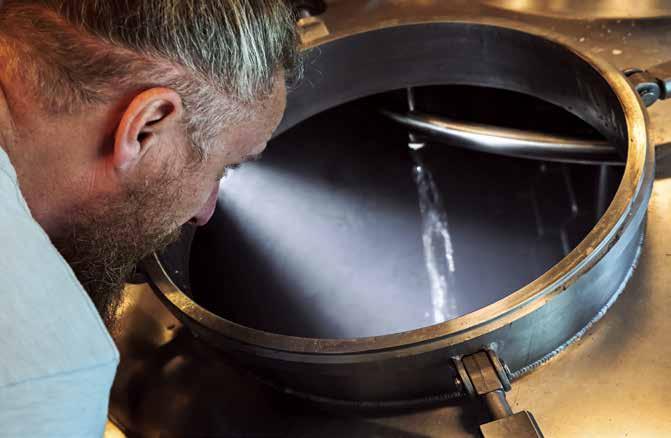

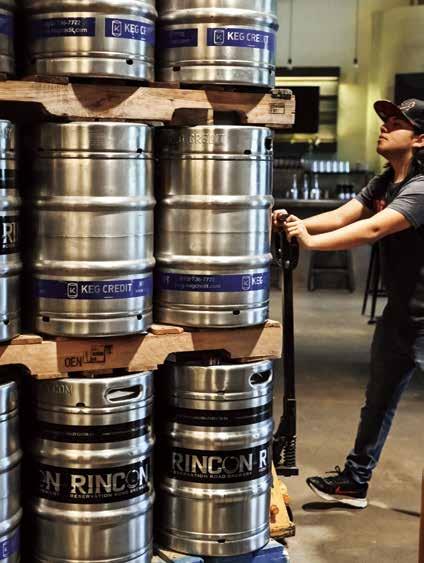

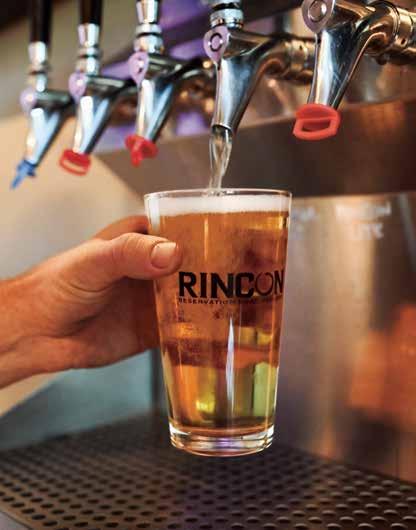
the forefront. Going by the new handle Rincon Reservation Road Brewery—3R Brewery for short—the business relaunched in January 2020 and, even after multiple years of Covid-related challenges, has grown to become the success REDCO initially envisioned. There are multiple reasons for that, but paying homage to the tribe across all aspects of the business was key.
“We native members of the tribe wanted to stay true to our heritage,” says Mazzetti. “It’s a point of pride being able to establish a brewery that puts forth a quality product utilizing our own water and ingredients we have here.”
That water comes from an aquifer fed by the San Luis Rey, which the tribe refers to as the “river of life.” It was the main artery that led the Rincon people from hunting in the eastern mountains in the winter to fishing and foraging near the ocean during the summer. Coincidentally, the water from that life-sustaining waterway is ideally suited for brewing.
“The hard water from the aquifer is graciously softened from Harrah’s system into our own feeds. It’s a great base for many of the styles we produce, including our IPAs and red ale,” says head brewer Zeth DeVore. “It’s compatible across the board so long as we put our salts in according to style. Sometimes we don’t even have to add any. I’m lucky in that regard.”
DeVore’s luck was running when REDCO received authorization to use 10 acres of reservation farmland to plant hops. The 3R team
is currently researching which hop varietals will grow best in our region, and they hope to see bines on the rise later this year. Those homegrown hops will join a list of other indigenous ingredients that lend a sense of place and cultural significance to 3R’s beers. To date, the company has used reservation-farmed guava and pomegranates, as well as blueberries and raspberries.
Symbolic illustrations from the tribe’s past appear across 3R Brewery cans, like the rattlesnake emblem that was popular in ancient basket artwork. Paintings and murals rich with history grace the walls of the original tasting room and a satellite taproom, which opened last year. Located on Newport Avenue in Ocean Beach, it provides a means of connecting with people one-onone away from the reservation, something the tribe considers a momentous step forward.
Other accomplishments include 3R Brewery beers finding shelf space with larger retailers along with high-profile placements at the San Diego Zoo Safari Park, Disneyland, and soon, Petco Park.
When looking back on how far 3R Brewery has come, Mazzetti says it would not have been possible without the generous and willful assistance and encouragement of other San Diego beer professionals. “People in the local brewing industry have been so helpful to us. Everybody helps each other. The outreach from the beer community has been so touching, and we are thankful to the many people who have helped get us to where we are today.” D
 » 3rbrewery.com
» 3rbrewery.com
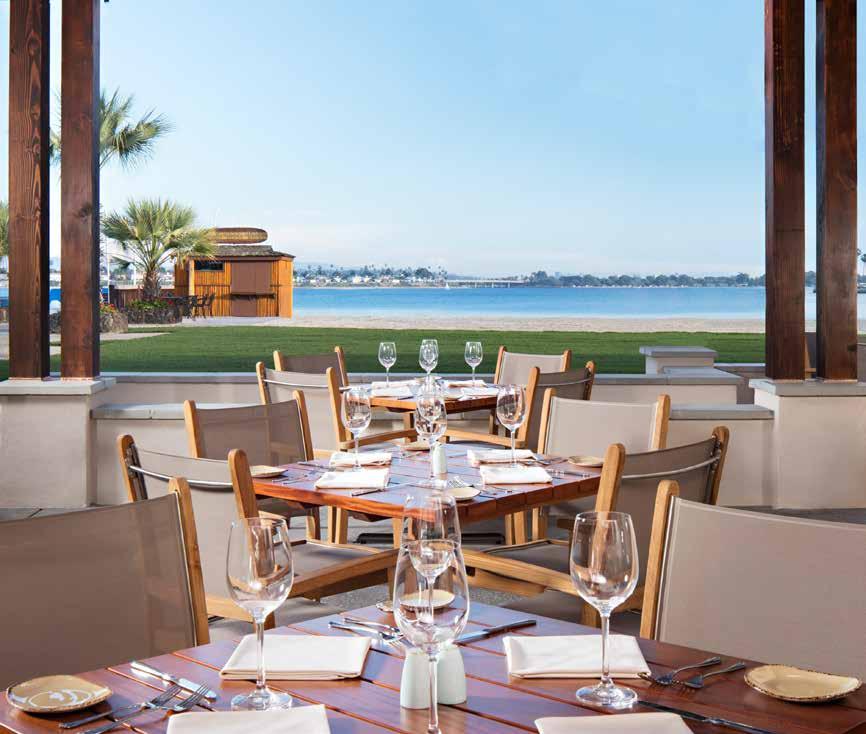
It’s true: Plastic water bottles have negative environmental impacts, some of which include groundwater depletion, controversy over water rights ownership, and the plastic container itself. According to a report from the United Nations University Institute for Water, Environment and Health published earlier this year, 85% of plastic water bottles become waste—as opposed to being recycled—and over 600 billion bottles were produced in 2021 alone. Most bottles aren’t recycled, and far too many litter the land, get blown into waterways and the ocean, and break down into microplastics that have been found in the farthest reaches of the planet.
With all its faults, bottled water isn’t going anywhere. Convenience, functionality for transport and storage, and improved access to clean water makes bottled water one of the fastest-growing industries in the world with a 25% market share of the $1.225 billion global beverage industry. In addition, water is an essential element of emergency preparedness in earthquake-prone Southern California. The Federal Emergency Management Agency (FEMA) recommends having one gallon of water per day per person stored in your household, and at least two weeks’ worth, if possible, in case of a natural disaster. While plastic water bottles continue to be a dangerous problem, what can
Microplastics are degraded plastic particles measuring less than five millimeters long. It is estimated that humans are ingesting up to 0.5 grams of microplastics through food and water per week, and sadly, they are turning up everywhere on Earth, from the planet’s highest mountains to its deepest seafloors.
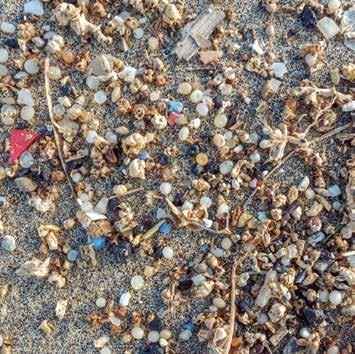
we do? Practice the three Rs (reduce, reuse, recycle) by minimizing the use of non recycled petroleum-based plastics, exploring creative ways to upcycle plastic bottles, and diligently participating in the multifaceted effort to recycle plastics. Our purchasing power does the most good, so here’s a distilled list of local businesses that help address these issues.
If you can’t stand the idea of wrapping your lips around plastic, Jimbo’s offers shoppers a glass-bottles-only selection as one of the grocer’s aggressive plastic-free sustainability initiatives.
» jimbos.com
Natural alkaline water might sound like a luxury, but this water bottler maintains an effort to keep their well supply available at an affordable price. It’s a big draw for health enthusiasts seeking the benefits of alkaline water, which offers a cleaner taste and improved hydration because it’s less acidic with a higher pH value compared to tap.
» carlsbadalkalinewater.com
A lot of thought went into developing the square-shaped Solar Rain water bottle that
uses less packing material and maximizes space, making the efficient shape one of a few advanced sustainable features this watery has to offer. Although it’s made of plastic, the PET #1 bottles are not only reusable and recyclable, but a special additive helps them biodegrade within five years should they find their way to a landfill. The unique hydrologic cycle Solar Rain uses to remove impurities from ocean-sourced water and local municipal tap-sourced water provides a noticeably crisp, refreshing taste.
» solarrainwatery.com
The green appeal of Surfwater is the reusable BPA-free aluminum bottle. Aluminum waste is recycled at a rate of 75% and requires less time to turn into a new product compared to plastic counterparts.
» surfwater.com
Conveniently located in the Westfield Mission Valley parking lot, One Earth Recycling pays cash for recycling beverage bottles and aluminum cans. They also offer responsible recycling of electronic items and scrap metals and incentives for families and children to participate. D
» oneearthrecyling.com
Boutique

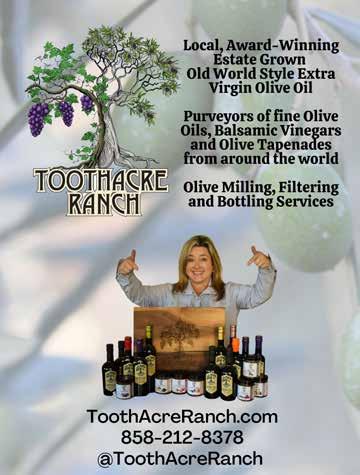

Open

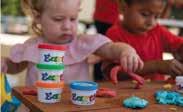





Growing up in San Diego as a Filipino-American, I was fascinated by food and how it connected me to my heritage and other people around me. As I grew older and began my journey into the workforce, I learned how our food is grown, sourced, transported, and shared with the world. When I started working in the environmental field almost a decade ago, I realized it was not just food that connected us, but water too.
At San Diego Coastkeeper, we often repeat the phrase “we are all connected by water” to remind ourselves that our actions, big or small, ripple out and affect everything around us. These factors are critical to our survival, from what we eat to where our water comes from.
Water is the source of life. It sustains, nourishes, and connects us
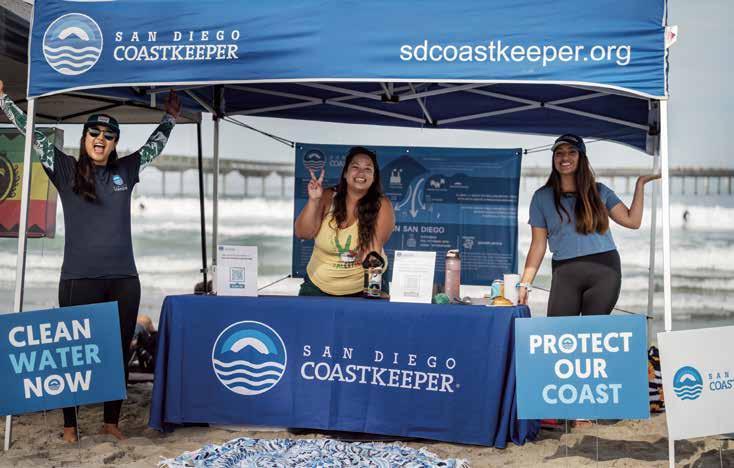
to everything on this planet. As we navigate the challenges of a changing climate and a growing population, we must be mindful of our impact on this precious resource. In this issue, we delve into complex topics like marine protected areas, polluted urban runoff, and the connection between our local seafood and the health of our watersheds. Because, after all, we all live downstream.
Whether you’re a farmer, a foodie, or simply a lover of nature, I encourage you to take a moment to reflect on your relationship with water and how you can make a difference. Stay curious, stay informed, and stay engaged. And most importantly, enjoy the bounty of this beautiful season, knowing that we are all connected by water.
Take good care,
Alyssa Celones Senturk Communications and Outreach Director San Diego CoastkeeperFounded in 1995, San Diego Coastkeeper protects and restores fishable, swimmable, and drinkable waters in San Diego County. Coastkeeper uses a strategic blend of advocacy, science, education, and community engagement to tackle persistent and emerging water quality and supply issues across our region. For more information, visit sdcoastkeeper.org.




Daisy
Upgrade your landscape with native and low-water plants like us and take advantage of free resources and rebates.
Summer is the right time to start planning for landscape upgrades that will help your yard and the entire San Diego region adapt to a hotter and drier climate that is straining water supplies across the Southwest.
Join thousands of San Diegans by choosing low-water plants, improved irrigation technologies, and water-efficient habits that not only save water, but also reduce energy use, protect our natural resources, and create beautiful outdoor living spaces.
Rebates for turf removal, rain barrels and more!
Free on-site water-use check-ups

Free on-demand landscaping videos

How-to landscaping guides
Landscape design templates

Planting guides

While most of us are familiar with elevated levels of mercury and other heavy metals in some fish species, more studies have found the presence of other toxic pollutants in our seafood. New and emerging research shows the prevalence of PCBs, PFAs, POPs, microplastics, and more. This new alphabet soup of acronyms might have you wondering how our seafood is becoming riddled with toxins and whether there is any way to prevent it.
The fact is, seafood quality and availability are affected by the health of watersheds. At San Diego Coastkeeper we like to say, “If you’re not in the water, you’re in a watershed.”
A watershed is an area of land draining into a common body of water. The mountains, canyons, and valleys act as a funnel, shedding water to the lowest point in a watershed. Some watersheds drain into a river, lake, estuary, or bay, while others drain into the ocean. You can think of your bathtub as a smallscale model of a watershed and a drain sewer as the common water body. In San Diego, we have 11 watersheds that all drain to the Pacific Ocean.
Stormwater pollution is San Diego’s most persistent threat to our marine ecosystems.

Living in cities like San Diego means that large portions of our watersheds are highly urbanized, which can lead to issues when it rains. City streets have impervious surfaces like buildings, parking lots, and roads that block water from soaking into the ground. When stormwater or urban runoff flows over hard surfaces like roofs, asphalt, and sidewalks, it picks up trash, debris, and chemicals such as fertilizers and pesticides along the way, eroding landscapes and creating public safety concerns.
In San Diego, we built most of our stormwater infrastructure almost 100 years ago to move water away from the city as
quickly as possible to prevent flooding and property damage. Water running through this network of storm drains and outfall pipes is untreated, meaning pollution flows off our streets and onto our beaches.
After it rains, the fecal indicator bacteria levels off our coast consistently exceed public health standards. In Southern California, many are familiar with the 72-hour rule, a guideline that discourages people from entering the water for at least 72 hours, or three days, after it rains to avoid getting sick from contamination. While San Diegans can try to avoid entering the ocean during this time frame, sea life doesn’t have that option.
Pollutants can wreak havoc on the natural balance of marine ecosystems. Increased nutrients can lead to harmful algal blooms, like the red tides we see here in San Diego. When nutrients like those found in fertilizers are higher than average in a water body, eutrophication sets off a chain of events that can lead to dead zones and massive fish kills. The abundance of nutrients causes an excess of plant and algae growth (or blooms), starving the surrounding waters of oxygen the fish and seagrass populations need.
When the overabundance of algae and plants begins to decompose, this produces a lot of carbon dioxide. Excessive CO2 lowers the pH of seawater, a process known as ocean acidification. The National Oceanic and Atmospheric Administration calls ocean acidification the “osteoporosis of the sea,” a process made worse by rising temperatures and added toxins. Studies show that lower pH results in less carbonate, an essential mineral used by sea life to build shells and skeletons. This reduces catch for local commercial and recreational fisheries, meaning smaller harvests and more expensive seafood.
Bioaccumulation is the buildup of toxic chemicals, like copper and zinc (compounds used in car brake pads and tires), in living tissue over time. It occurs when organisms, like fish, take in harmful substances faster than their bodies can break them down and eliminate them.
Consuming fish on the lower end of the food chain (also called trophic levels), such as anchovies, sardines, and herring, can help
minimize our exposure to chemical contaminants. The higher up the food chain we go, the larger and longer-lived those species become, and the more accumulated pollutants like DDT and mercury are in fish like tuna.
For example, if you’ve fished at any popular spots along San Diego Bay, as with other public fishing places throughout the state you’ve likely seen warning signs listing potential health concerns related to eating the fish in the area.

For updates on fish advisories throughout the state, visit Good Catch California, a program created by the California Office of Environmental Health Hazard Assessment (OEHHA).
By protecting our watershed, reducing pollution, and fighting climate change, we can ensure safe and sustainable seafood for all. It all starts with us. As individuals, we can conserve water, reduce waste, wash our cars at a car-washing facility, install rain barrels and catchment basins, and plant native species gardens at home. On a larger scale, community members need to vote for candidates who support clean water initiatives and participate in public discourse to pressure companies and governments to take the necessary steps to protect water quality for everyone.
One small way to take action is to sign up for newsletters of organizations already engaged in this work. San Diego Coastkeeper’s newsletter includes calls to action, blogs, important news, and more.
Together we can protect the future of seafood.
» sdcoastkeeper.org/newsletterMarine Protected Areas (MPAs) are areas of the ocean where human activities are restricted to protect the environment and marine life. MPAs aim to preserve entire ecosystems rather than single species. They can include nature reserves, underwater marine parks, and other areas that benefit fisheries, local economies, marine biodiversity, and public health. Regulations within these areas vary and may allow for or exclude research, fishing practices, recreational activities, or travel. By protecting a small percentage of our waters and providing a safe haven for keystone species, we can minimize extinction risks, reestablish ecosystem integrity, enhance productivity, and increase the diversity of life for the entire region.
San Diego County boasts 11 unique MPAs that cover a variety of landscapes and feature different levels of protection. We dive into three marine protected areas here.
In 2012, San Diego Coastkeeper helped establish MPAs throughout California. The organization continues to monitor and advocate for protected spaces, educate communities, clean up trash and pollution, and work with local fishermen to conserve these areas. MPAs ensure safe and sustainable seafood, cleaner waters, and better public health.
Visit sdcoastkeeper.org/marine-protected-areas for more information and a full list of San Diego County’s marine protected areas.
Before opening in 1996, only five fish species existed in the Batiquitos Lagoon. Over the years, MPA management focused on restoring tidal action to the lagoon and has since helped significantly increase the number and diversity of fish, now ranging up to 65 species. Lagoons provide critical breeding and nursery areas for a wide array of coastal fish, provide habitat and food for resident species, and serve as feeding areas for seasonal fish. Batiquitos Lagoon is a “No-Take” State Marine Conservation Area. Learn more on the Batiquitos Lagoon Foundation website. » batiquitosfoundation.org
Matlahuayl State Marine Reserve and San Diego-Scripps Coastal State Marine Conservation Area are adjacent marine protected areas just offshore the University of California, San Diego. They include La Jolla Cove and neighboring areas. These MPAs are
near deepwater canyons, providing cold, nutrient-rich waters to many habitats like kelp forests, surfgrass beds, and rock reefs. This “underwater park” is home to many unique species, including leopard sharks, blue-banded gobies, garibaldi, nudibranchs, California spiny lobsters, sea lions, kelp bass, dolphins, and migrating whales. Matlahuayl comes from the Kumeyaay language and means “place of the caves.” Learn more on the California Department of Fish and Wildlife website.
» wildlife.ca.gov/Conservation/Marine/MPAs/San-Diego-ScrippsCoastal-Matlahuayl
Cabrillo State Marine Reserve extends off the Cabrillo National Monument in Point Loma and includes a rocky intertidal area and an underwater kelp forest. This MPA is an excellent place to go tide pooling and observe colorful sea stars, mussels, sea urchins, anemones, shore crabs, and sluggish sea hares during low tide.
» nps.gov/cabr/index.htm
Avoid touching animals
Touching animals can cause damage and stress to them and could lead to personal injury.
Leave life where it is
Never remove animals, shells, or rocks from the tide pools. Observe them where they are and avoid turning over rocks.
Walk gently
Take care not to step on any plants or animals.
Check your local tide chart
Tides can rush in when we least expect them. Avoid danger by consulting a tide chart or an on-site expert.
For more tide pooling dos and don’ts, check out sdcoastkeeper.org/ blog/marine-conservation/tide-pool-do-s-and-don-ts.
Right: Tide pools at Cabrillo National Monument.

The issue of climate change is vast, and understanding it can be overwhelming. But as individuals, we can take small steps to make a big difference. One way to start is by educating ourselves through various forms of media. This way, we can understand the challenges we face and figure out how to create a better future. Here we highlight our top media recommendations that can feed your understanding of food and water and help you make informed decisions about what you eat and drink. From books and podcasts to documentaries and television shows, these resources offer a wealth of information and perspectives on how climate change impacts every aspect of our daily lives. Get ready to satisfy your hunger for knowledge and dive into these resources.
(Book)
Song for the Blue Ocean: Encounters Along the World’s Coasts and Beneath the Seas is part travelogue and part scientific investigation. Scientist and fisherman Carl Safina journeys around the world to capture the perilous plight of three fish groups (bluefin tuna, Pacific salmon, and tropical reef fish) and the people and industries critical to their survival. Safina’s prose is eerily beautiful and heartbreaking, evoking similar feelings to Rachel Carson’s revolutionary text, Silent Spring

(Podcast)
Season one of In Deep, a podcast from The Water Main, will take you through the labyrinth of how we clean, manage, and deliver our water—from the toilet to the tap. Join host Jed Kim and a team of reporters as they explore the strangely fascinating and troubling world of clean water, from history to policy and full-on drama. With conversations with water advocates, historians, scientists, politicians, and everyday citizens, In Deep is a must-listen for anyone who cares about the importance of maintaining our water systems and the danger they pose if they fail.
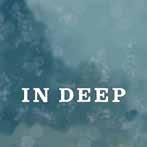
Want to know the true cost of your food choices? The Foodprint website’s report, “The Water Footprint of Food,” brilliantly highlights the hidden water costs behind our favorite foods. With clever infographics and clear explanations, the report takes a deep dive into the water needed to produce everyday food items and how it impacts the environment and communities. It’s an eyeopening read that will make you think twice about what you put on your plate. Trust us, this report is the missing ingredient in your food knowledge recipe.
Water & Power: A California Heist attempts to untangle the mess of water rights in California while hearkening back to the 1974 film noir classic Chinatown plot. From contaminated drinking water or no water at all to agribusiness billionaires, this movie is a clear warning of what’s to come in small towns and across the globe. Documentary director Marina Zenovich expertly weaves current events, historical corruption, and intimate interviews into a compelling and sometimes disturbing tale of our murky relationship with water in the Golden State.

Glancing at the credits, one might mistake this National Geographic series for a Hollywood action movie, with stars like Harrison Ford, Arnold Schwarzenegger, Don Cheadle, and Jessica Alba. Although Years of Living Dangerously aired on Showtime almost 10 years ago, the stories of climate change and the big and small ways we are connected economically, environmentally, and politically still ring true today. Whether you’re a veteran or new to the cause, this show has something for everyone. All two seasons are available to watch for free on YouTube. D




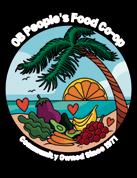

























Learn more about how these and other farms grow food at barefootbooks.com/food-for-the-future

Sustainable farms grow food without using too much energy, water or harmful chemicals, and without harming the habitats of animals who live nearby. Some types of sustainable farms have been around for thousands of years, while others are modern inventions.
USA)
Salt fArm (Hawai’i USA)

MushRoom farM (Mexico) VeRtical fArm (Singapore)
CirculAR garden (Senegal)
Oyster faRm (Australia)
Are there any sustainable farms like these close to where you live? Which would you most like to visit?
Sustainable farms are one solution. We can go back to old ways or try something new. Let’s take care of our Earth — for me and for you!
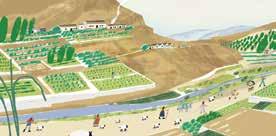
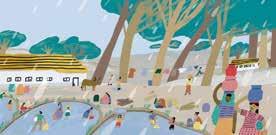
Rooftop Garden (Boston, USA): Red Sox baseball team created a farm on an empty roof at Fenway Park.

Food Forest (Kenya): Self-maintaining food forests are replacing some animal farms in an effort to provide enough food.

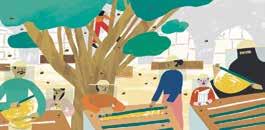


Fish Farm (Brazil): Temporary traps catch fish as they return downstream.
Doba (India): Water is stored in the wet season to use for farming in the dry season.
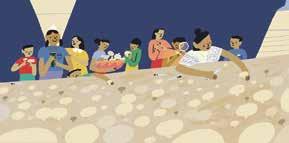
Terrace Farm (Chile): Steps are built into mountains to save water while farming.
Biosphere (Italy): Underwater pods use hydroponics (nutrient-enriched water instead of soil) to grow food.

Oyster Farm (Australia): Oyster farming is one of the oldest forms of aquaculture (farming in the water).
Salt Farm (Hawai’i USA): When sea water evaporates, the salt crystals that form are mixed with red clay.

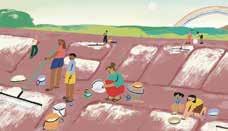
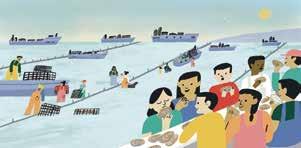
Vertical Farm (Singapore): Supertree Grove is a garden that creates solar energy and collects rainwater.
Circular Garden (Senegal): The circular design allows plant roots to grow towards the middle, trapping liquids.
Honey Farm (Yemen): Honey is one of the most sustainable foods, because all you need to produce it are bees and flowers!
Mushroom Farm (Mexico): Mushrooms don’t need energy from the sun, so they can grow in the dark!
Do you know where your food came from?
You’ll Need:
• packages of food

• world map
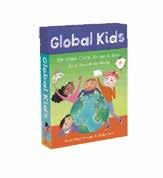
1 Gather packages of food to look at. Read the front, back and sides of the packages and see if they list where the food was grown or made. (Not all food packages do.) Make a list of the various locations. How many different countries and cities can you find listed on the food packages?
2 3 4
Using a world map, find the food that came the longest distance to you. How do you think it got to you? Find the food that came the shortest distance to you. Do you notice any patterns? Do certain types of food often come from the same geographical area?

Look for any words written in foreign languages. Do you know what languages they are? Do you know what the words say?

Put the packages back where you found them when you’re finished!
Now that you know how to discover where your food comes from, look for labels when your family shops for food. Try to find foods grown and prepared close to where you live. It takes energy — and can cause pollution — to move food from place to place.
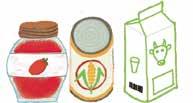
Award-winning Italian Cuisine, Chef, Service, and Wine List

Michelin Guide Bib Gourmand Restaurant
Open 7 days a week in Liberty Station for Indoor & Heated Patio Dining and Take-Out/Delivery 2820 Roosevelt Rd, San Diego | 619-270-9670 | solarelounge.com



90+ Booths with local organic produce, prepared foods and handmade crafts.

Open Sundays, 10am–2pm
Paul Ecke Elementary School 185 Union Street • Leucadia, CA
Biking, walking and skating are encouraged as parking is limited.
Leucadia101.com


With climate change, Southern California is predicted to grow warmer and drier. Climate change also threatens the reliability of our supplies of water from Northern California and the Colorado River.
While wiser use of our lands and potable reuse of wastewater provides promising solutions to drier times ahead, better harvesting of rainwater will need to be part of future water use strategy. New technology offers hope, but many rain-wise methods have been around for a long time.
Here are six rain harvesting techniques San Diegans will see more of in times to come.
Rainwater can be harvested from the roof of a house or garage with a rain barrel. Installation is pretty much a no-brainer: Place the barrel on a level surface and divert a downspout into it. Yields can be great. Half an inch of rain falling on 400 square feet of roof will produce 125 gallons of water.
The same amount of rain falling on parking lots and roadways can result in tens of thousands of gallons flowing into local streams, increasing flooding. Brad Lancaster, author of Rainwater Harvesting for Drylands and Beyond, suggests harvesting stormwater runoff, which diverts rainwater to areas where the water can infiltrate and support water-reliant trees and shrubs.
Swales collect rainwater during storms, greatly increasing infiltration. This method consists of creating a lowered basin with a
berm that lies perpendicular to the slope of the land. Water-reliant plants such as fruit trees or native sycamores and cottonwoods can be planted around the periphery of a swale.
Once water infiltrates into the ground, it can be kept there. One technique is using the shading of structures. In my work as a horticulturist, I’ve found that shade can make a big difference in how much supplemental watering is needed. By planting highly deciduous plants, such as coastal sage and California sunflower, under a south-facing overhang, they receive a full day’s sun during the winter, yet are fully shaded during the summer. The plants, particularly the sage, stay green all year long.
Mulch is any substance—including leaves, wood chips, and even rocks—placed on top of the ground that reduces evaporation. If you have or know of anyone with a big tree, leaves are free. Just as easily, winds can blow them away. Wood chips are more substantial, but they can weather badly and look unattractive. Rocks are initially hard to move but remain attractive. I prefer using the round river rocks ubiquitous to coastal San Diego. Mulch can keep plants greener during long, dry summers and increase the length of time the plant spends in the flowering stage.
We can collect and store rainwater, but what about the times when San Diego doesn’t get rain? Researchers at MIT have found a way to harvest water directly from the air. Much like the way our native Torrey pines gather dew on their needles to produce their own “rain,” MIT’s apparatus draws in moisture during the night and uses the power of the sun to release it the next day. D


Breathtaking Views, Uniquely California Cuisine
Now Open for Breakfast, Lunch, & Dinner

 BY TOMMY GOMES AS TOLD TO MICHAEL A.GARDINER • PHOTOGRAPHY BY LAUREN DI MATTEO
BY TOMMY GOMES AS TOLD TO MICHAEL A.GARDINER • PHOTOGRAPHY BY LAUREN DI MATTEO
When people go to the grocery store, they don’t understand the real value of a fish. They may think it’s the retail price. Or maybe it’s the wholesale price. What they don’t get, though, is that even before the fishing boat leaves the dock, that one little fish has created a whole lot of jobs.
Start with the grocery store: You have the stock clerks, the baggers, the cashiers, the guys in the fish department, and more. All of them have to get to the store, which means they have to gas up their cars. That creates jobs.
Then there’s the boat. That’s got to be gassed up too. And it takes guys to build it and fit it out with corks and floats and lead lines and buoy lines. It takes a lot to gear out a boat. Then that boat needs all the stuff that factors into going fishing. You need all sorts of provisions, which starts with the guys who make and sell those provisions, but there are also jobs for the forklift drivers and truck drivers who bring the supplies down to the boat.
That’s all before the boat pulls away from the dock. How many people are on that boat depends on the size of the boat. A 90-foot longline boat has probably got six or seven guys on board. There’s also a government observer—an agent from the National Oceanic and Atmospheric Administration (NOAA) whose job is to make sure they’re doing it right. It’s kind of like driving your car with a CHP officer in the passenger seat, only you also have to feed him. That’s another job that fish creates.
The fish creates more jobs back at the docks. Someone has to unload the fish from the boat. You’ve got truck drivers, ice machines, box companies—and that’s before the fish gets to the distribution center where it’s broken down into loins and portions and then vacuum-packed and prepared for sale.
At every step, that fish is creating more jobs. And that’s before the fish gets put on a truck and goes to another distributor that gets it to the restaurants. This all has to happen quickly. People save their pennies to eat high-quality seafood and even the best fish goes bad if it’s not handled quickly and properly. There’s a clock ticking from the moment that fish comes out of the water.
When the fish gets to the restaurant, it creates jobs at the front of the house (hosts, servers, bussers, etc.) and back of the house (chefs, line cooks, dishwashers, etc.). Even after the meal is done and the restaurant shuts down for the night, it continues creating jobs as what’s left of it is discarded, goes to waste management, and is picked up and taken to the dump.
That fish is not just part of San Diego’s working waterfront, it is the key to our success. It’s why it’s important to buy fish at retail that is truly local and that contributes to our local blue economy. That fish is so much more than just a delicious meal. D








ANSWER KEY: SUMMER WORD PLAY (PAGE 20)

ADVERTISERS GUIDE | WITH APPRECIATION FOR THESE BUSINESSES
Thank you to our advertisers. Readers, please patronize these supporters of our vibrant local food system and Edible San Diego’s editorial mission.
AMERICAN FARMLAND TRUST
A.R. VALENTIEN
CATALINA OFFSHORE PRODUCTS
CHUPAROSA WINERY
COLLIN’S AND COUPE
DA-LE RANCH
DOCKSIDE 1953
EARTH DŌ
EPIKWORK
FALLBROOK CHAMBER OF COMMERCE
GOLDEN DOOR COUNTRY STORE
THE GRAND TEA ROOM
GRANGETTO’S FARM AND GARDEN
GRAPE DAY FESTIVAL
GRILLWORKS
KVARØY
LEUCADIA FARMERS’ MARKET
LUCKYBOLT
MATT YUNKER, REALTOR
MAYA MOON
MILLPORT
MISSION VALLEY FARMERS MARKET
MITCH’S SEAFOOD
NATURALLY SAN DIEGO
NORTHWESTERN MUTUAL
OCEANA
OCEAN BEACH PEOPLE’S ORGANIC FOOD MARKET
OCEANSIDE FARMERS’ MARKET
PERENNIAL PASTURES
RAMONA RANCH WINERY

RANCHO LA PUERTA
RIPOL EFFECT
ROSE’S TASTING ROOM
SAFARI COFFEE
SAGE HILL RANCH GARDENS
SAN DIEGO COUNTY WATER AUTHORITY
SCENIC VALLEY RANCH VINEYARDS
SOLARE
SOLAR RAIN
SPECIALITY PRODUCE
SPICE BREEZE
STATE STREET FARMERS’ MARKET
TOOTHACRE RANCH
WHITE ROSE AQUA CREMATION
WOOF ‘N ROSE WINERY
Show off your business values and advertise with Edible San Diego.



























Subscribe


75+ local food magazines, national and international print, digital, and social media avertising, email marketing podcast and event sponsorships, regionspecific activations, and custom content.


















